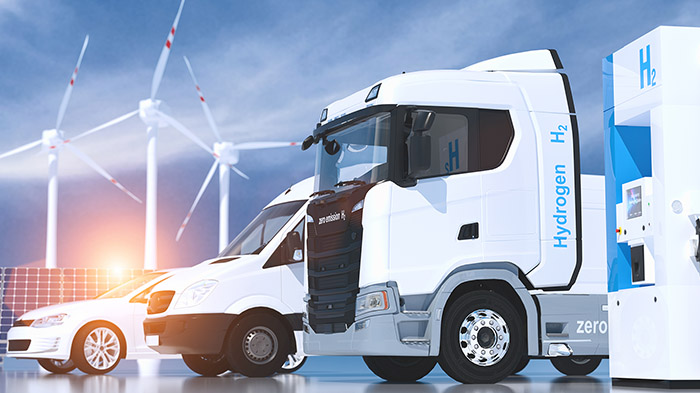
Fuel cell electric vehicles use air system components for efficiency and durability. However, there are energy losses in the air system components, especially in the compressor. Beyza Dursun is a PhD student in the project “Air systems modelling for efficient fuel cell electric vehicle”, working on improving the air system design to reduce the energy losses.
What is your background Beyza?
“I grew up on Turkeys west coast in the city of İzmir, which is the third largest in the country. I have my bachelor’s degree in mechanical engineering and my master’s degree within thermodynamics. I got interested in fuel cells and contacted one of my professors in this area, and got the opportunity to join one of his projects. Before coming to Sweden I had actually visited a friend here and I really liked it, at least in the summer, haha. I then thought to myself that at some point I would come back, and I did when I got involved in this PhD project that started in 2023.”

First, can you give a short explanation of a hydrogen vehicle?
“It’s an electrically driven vehicle, but the energy output comes from hydrogen fuel cells instead of stored energy in batteries. The most common concept for vehicles is PEM, which stands for Proton Exchange Membrane. Fuel cells solutions are flexible and can in many cases be a good choice for heavy duty applications. However, they are a bit less energy efficient compared to battery vehicles.”
What is the project “Air system modelling for efficient fuel cell EV” about?
“In fuel cell systems, hydrogen reacts with oxygen from the air through an electrochemical process to produce electricity, water vapor, and a bit of heat. It’s not a combustion process like in regular engines, so it’s much quieter and cleaner.
Now, while you could use air at atmospheric pressure, it’s not very efficient. That’s why most systems include a compressor to push pressurized air into the fuel cell, which helps improve performance and efficiency. The downside is that the compressor itself uses quite a bit of energy—actually, up to 20% of the system’s total losses can come from it. That’s one of the things we’re trying to improve in this project.
To support our work, we’re using a truck simulation platform called ECCV (Electric Commercial Vehicle Virtual platform), which was developed by Linköping University (LiU)—they’re also one of our project partners. The simulation environment lets us test different design ideas, like new compressor concepts, and see how they would perform in a realistic heavy-duty vehicle setup.”
How can the compressor efficiency be improved then?
“The project has not reached that stage yet, but we will be working on a new compressor design. We are also considering integrating an expander to recover energy from the exhaust airflow that results from the electrochemical reaction in the fuel cell. This concept is similar in principle to how a turbocharger utilizes exhaust gases in an internal combustion engine.
However, one significant difference is that fuel cells generate much lower exhaust temperatures compared to combustion engines. While internal combustion engines can reach several hundred degrees Celsius, fuel cell exhaust temperatures typically range between 60–90°C, making the available thermal energy much lower in density.
Due to this relatively low temperature, the exhaust gases alone may not provide enough energy to drive the expander efficiently. Therefore, we may need to integrate an electric motor to support its operation. This introduces a trade-off between motor size, energy recovery potential, and cost, which will need to be carefully balanced in the system design.”
What are your thoughts on these design solutions?
“These are not common solutions for PEM cells and people have been sceptical, including myself in the beginning. But then I saw the results from some initial experiments and started to believe it could work. There will be a new design to the compressor and ideas for the expander that we are currently experimenting with. For the first step of the project, we have a good amount of promising simulation results from optimisations for fuel cell parameters. My first paper is currently under review, and hopefully it will be accepted for European Fuel Cells and Hydrogen conference in Capri which I will attend in September. Then I will publish another paper that will be presented at the International Hydrogen Technology Energy Conference in Turkey.”
What is next?
“I’m really excited for the next step, which is also the main step, that is designing the air supply system. Hopefully this process can start, at least from my side, during this summer. The designing process is on-going together with Volvo trucks, with Ulf Aronsson and Fredrik Rahm in particular. They have been supporting me a lot which I’m very grateful for. I’m really looking forward to seeing what we can achieve.”
Have there been any challenges?
“The initial models for the fuel cells were based on 20-year-old datasets, and a lot has happened in fuel cell technology during these years. So, my first task was to update the datasets to have correct fuel cell parameters for the simulations. This task turned out to be harder than I thought. It took me over seven months, after desperately sending e-mails to contacts and meeting people at conferences, before I finally got hold of a proper useable dataset.”